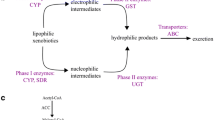Abstract.
Four mouse genes, programmed cell death 2 (Pdcd2 or Rp8), brain protein 44-like (Brp44l), bystin-like (Bysl), and uncoordinated-93-like (Unc93l) genes were mapped to Chromosome (Chr) 17. The orthologs of these and other mouse Chr 17 genes are localized on Chr III of Caenorhabditis elegans, thus defining a syntenic group conserved between vertebrates and nonvertebrates. In human, mouse, and snake, the PDCD2-, and TATA-binding protein (TBP)-encoding genes are adjacent tail-to-tail. The TBP- and PDCD2-encoding genes are linked also in Drosophila, and, together with proteasomal subunit C5 gene, they are syntenic in human, mouse, C. elegans, and Schizosaccharomyces pombe. The orthologs of tightly linked C. elegans genes, coding for BRP44L and PDCD2, map to about 2-Mb interval on human region 6q27 and on mouse Chr 17. Hitherto, 13 members of synteny conserved between C. elegans and vertebrates have been detected, of which six are located on Drosophila Chr X. Such a distribution of transcription units is nonrandom and could indicate a long-range cis-acting relationship among the genes within the conserved syntenic group.
Similar content being viewed by others
Author information
Authors and Affiliations
Additional information
Received: 26 June 2000 / Accepted: 13 October 2000
Rights and permissions
About this article
Cite this article
Trachtulec, Z., Forejt, J. Synteny of orthologous genes conserved in mammals, snake, fly, nematode, and fission yeast. 12, 227–231 (2001). https://doi.org/10.1007/s003350010259
Issue Date:
DOI: https://doi.org/10.1007/s003350010259




